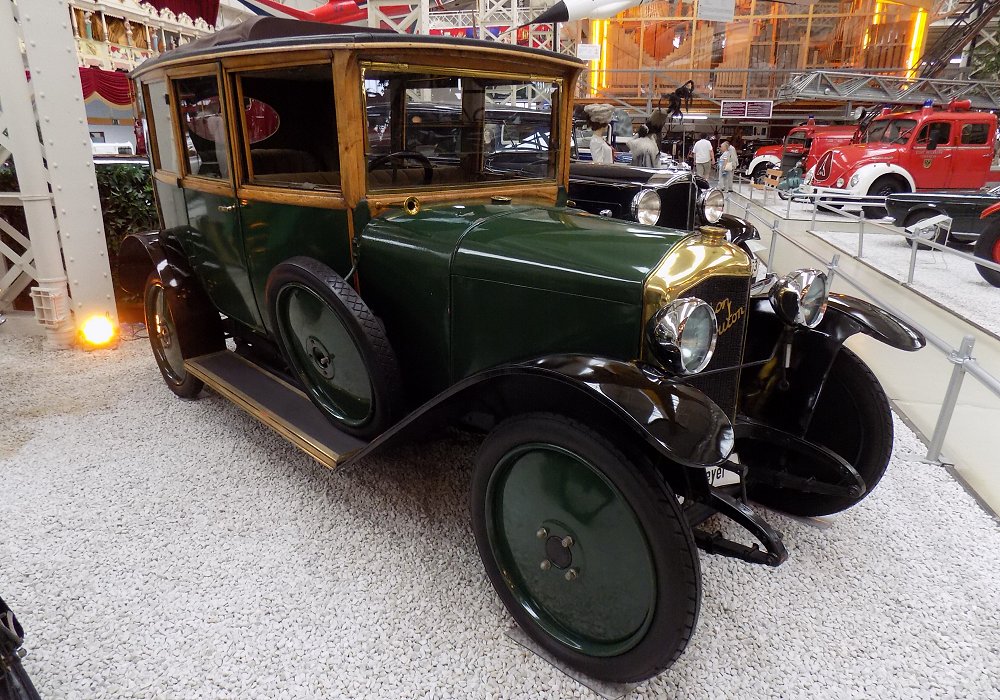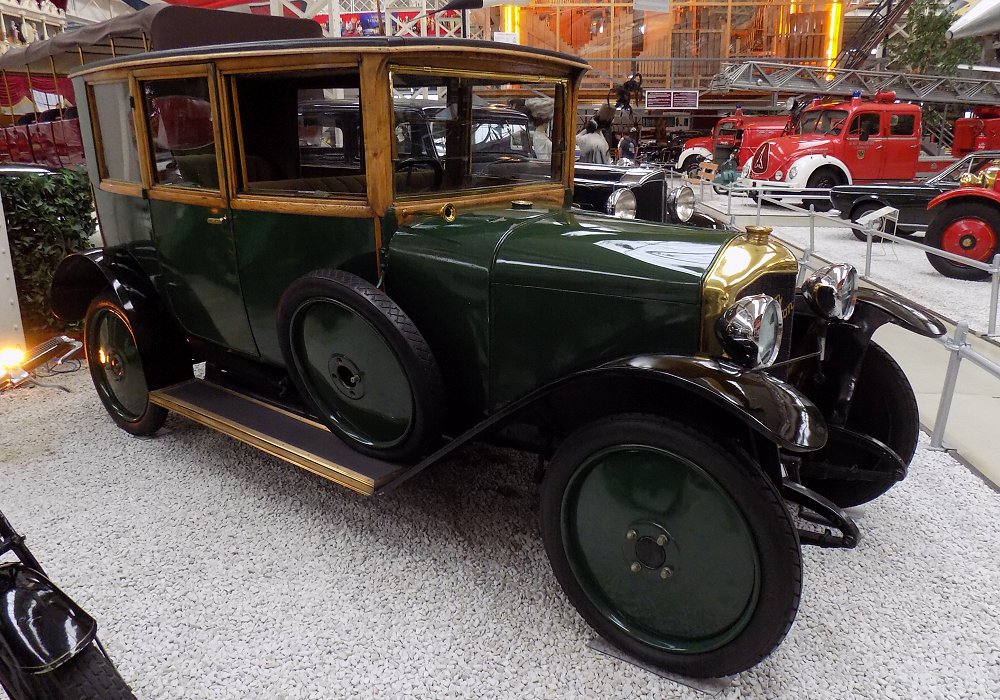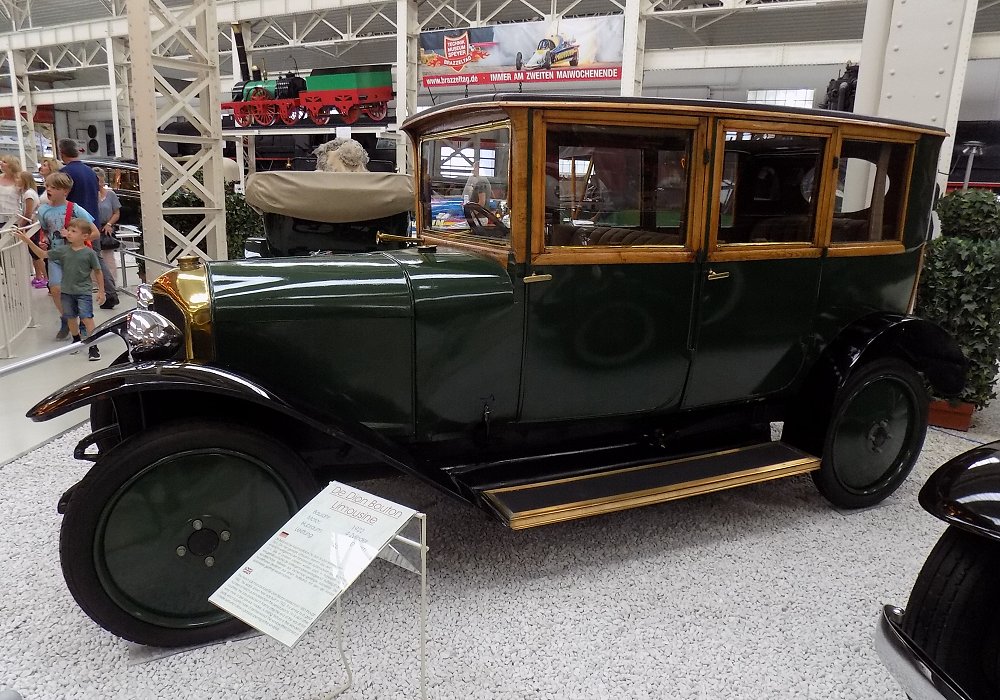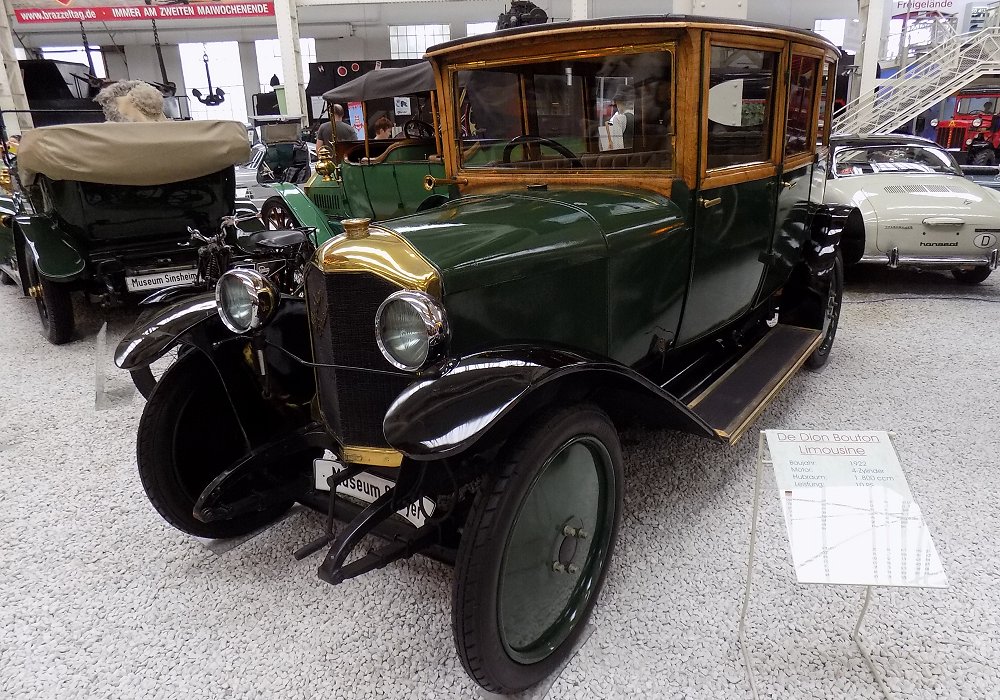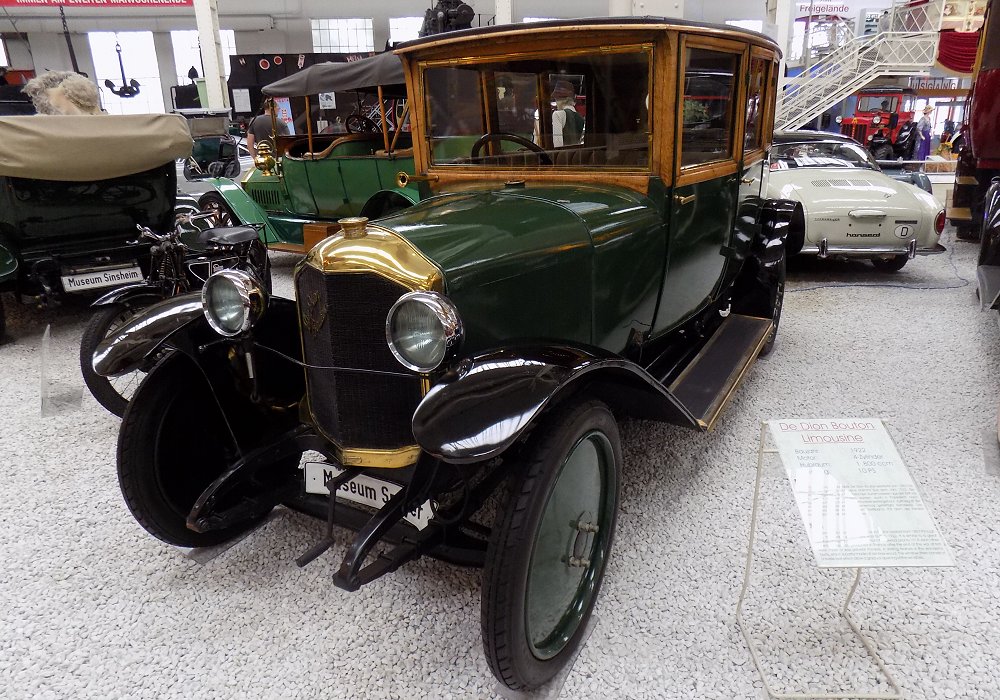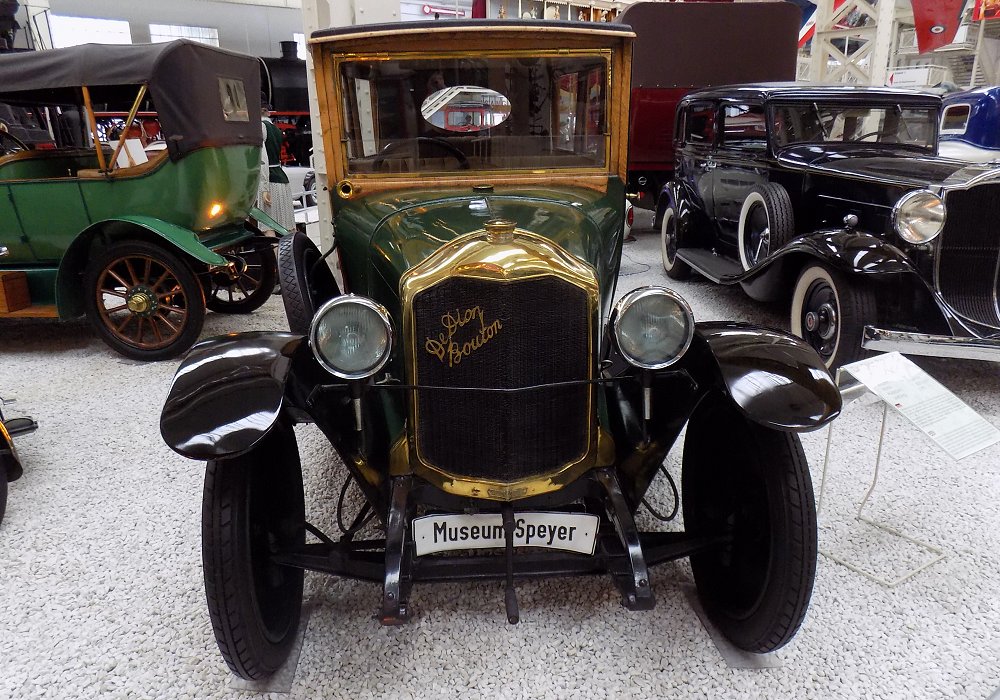Description
The De Dion-Bouton Type ID 10 CV Limousine was a closed-body variant of the marque’s early 1920s Type ID model, built during a period when the company was shifting from lightweight early vehicles toward more sophisticated, fully enclosed automobiles. As a Limousine, it catered to customers seeking comfort, formality, and all-weather usability in a vehicle that retained the brand’s established mechanical dependability.
The “10 CV” designation referred to the car’s French fiscal horsepower rating, based on engine displacement for tax purposes. The actual engine fitted to the Type ID was a four-cylinder side-valve unit, usually displacing between 1.8 and 2.0 litres. It produced around 20 to 25 horsepower, which allowed for modest but adequate performance, particularly suited to town driving and short-distance touring. The engine ran on petrol and used magneto ignition, with cooling provided by a front-mounted radiator and water circulation system.
Power was delivered through a manual gearbox, typically with three forward speeds and one reverse. A floor-mounted gear lever gave the driver control over the transmission, and a mechanical clutch connected the gearbox to the engine. Drive was transmitted to the rear wheels via a shaft — a standard practice by this time — offering better reliability and cleanliness than the earlier chain-driven systems.
The Limousine body style was defined by its enclosed passenger compartment, often with a glass partition separating the chauffeur’s seat from the main cabin. This configuration was especially popular with professional or upper-middle-class buyers, such as doctors, business owners, or city professionals who required a dignified and comfortable mode of transport. The chassis remained the same as in the Torpedo version, comprising a steel ladder frame with semi-elliptic leaf spring suspension and solid axles.
Inside, the Limousine version of the Type ID was better appointed than its open-top counterpart. The cabin usually featured upholstered bench seats — often in wool broadcloth or leather — and amenities such as interior lighting, pull-down blinds, coat hooks, and sometimes even a speaking tube or bell for communicating with the driver. The dashboard in the chauffeur’s compartment was simple but functional, with essential gauges like a speedometer, oil pressure indicator, and basic switches.
The exterior of the Limousine was dignified and upright, with a squared-off roofline, side windows with sliding or drop-down glass panes, and an overall profile that gave the impression of quiet sophistication. The body was typically finished in deep blacks or dark shades, and the roof may have been covered in leatherette or waterproofed canvas to aid in weather protection. Running boards, spoked wheels, and externally mounted lamps contributed to its formal aesthetic.
Braking was mechanical and usually limited to the rear wheels, with a transmission brake sometimes included as auxiliary support. Given the moderate speeds at which the car was expected to operate, this braking setup was considered adequate. The wheels were either wooden artillery-style or steel-disc, fitted with narrow, high-pressure tyres designed for the road conditions of the era.
The De Dion-Bouton Type ID 10 CV Limousine represented a refined, respectable, and practical form of early 1920s motoring. While not as powerful or luxurious as larger six-cylinder or chauffeur-driven town cars from high-end marques, it fulfilled a vital role in the growing market for enclosed, middle-class vehicles that offered protection from the elements and a more dignified presence on the road.
Today, surviving examples are rare, particularly in limousine configuration, as many such vehicles were used intensively and eventually scrapped. Those that remain are valued not only for their historical significance but also for their elegant coachwork and connection to one of the pioneering names of early motoring.
